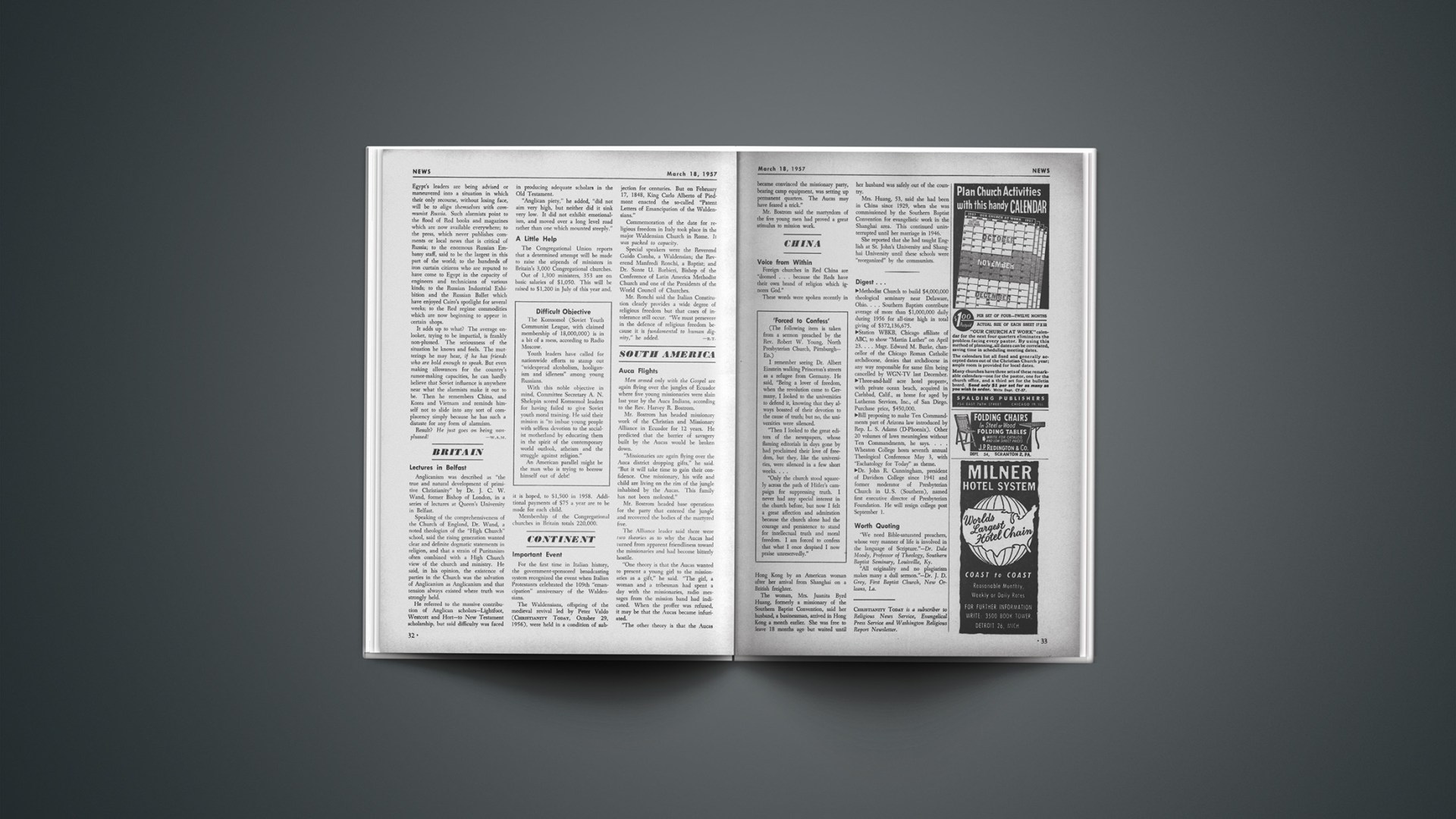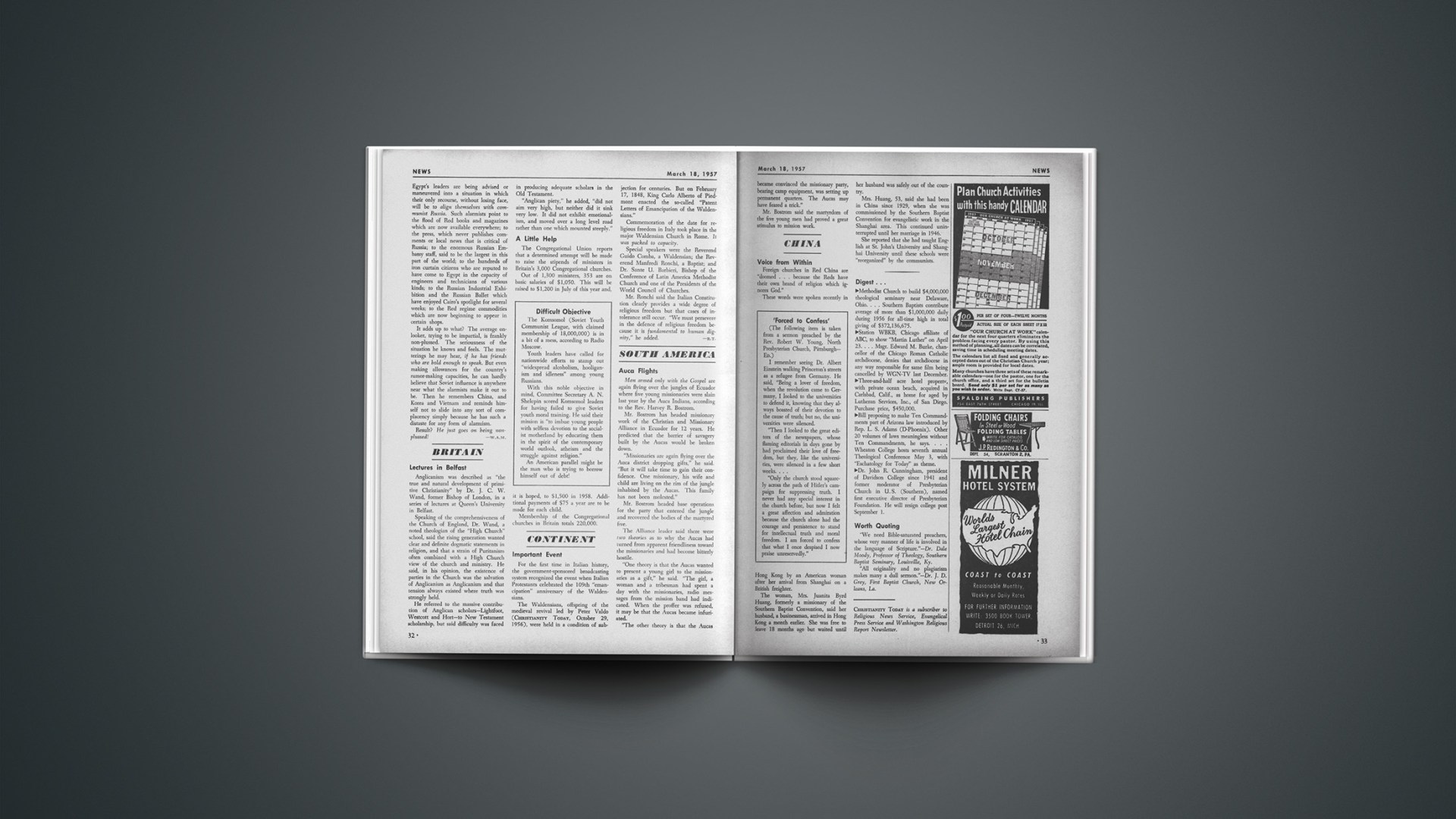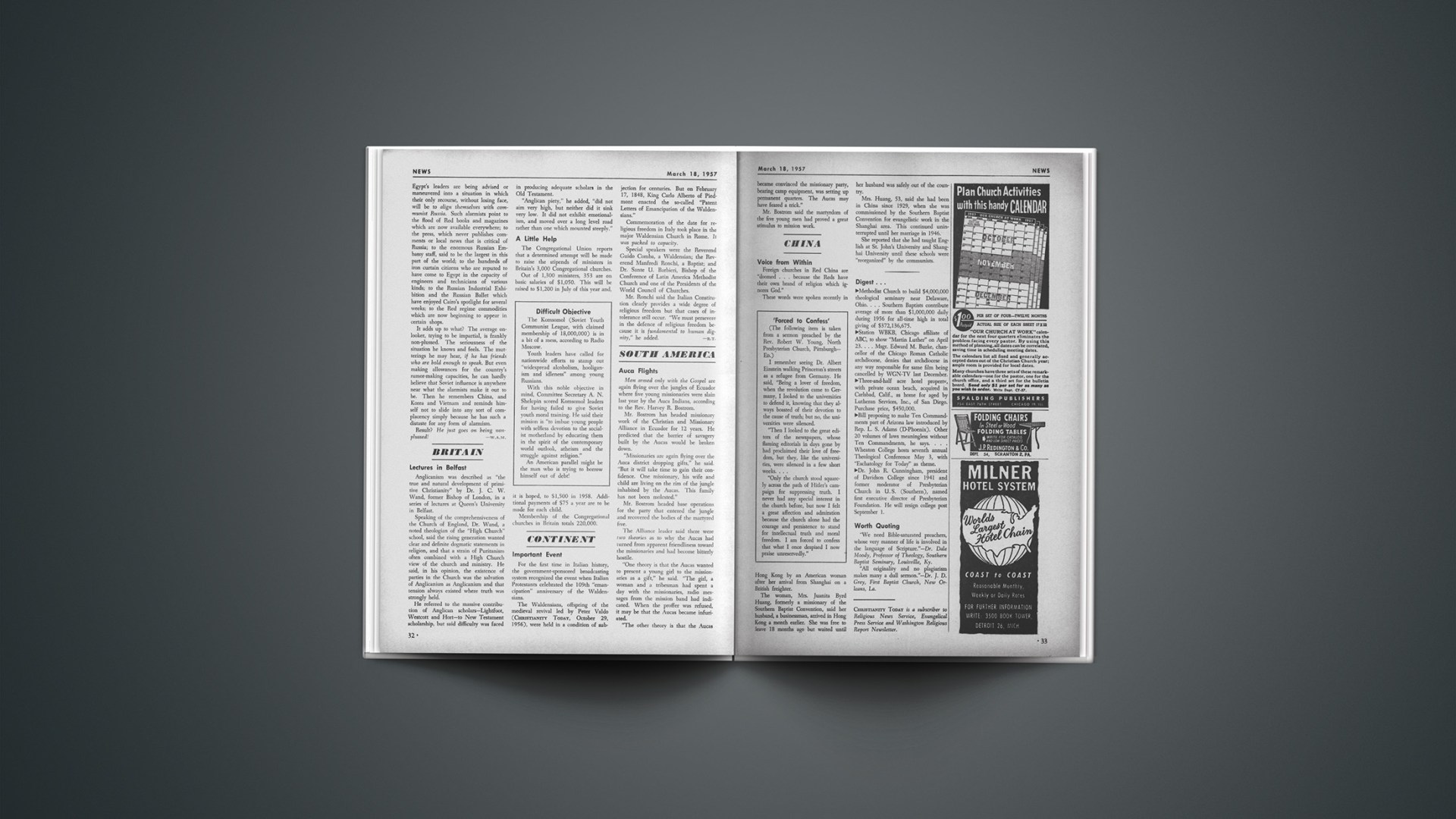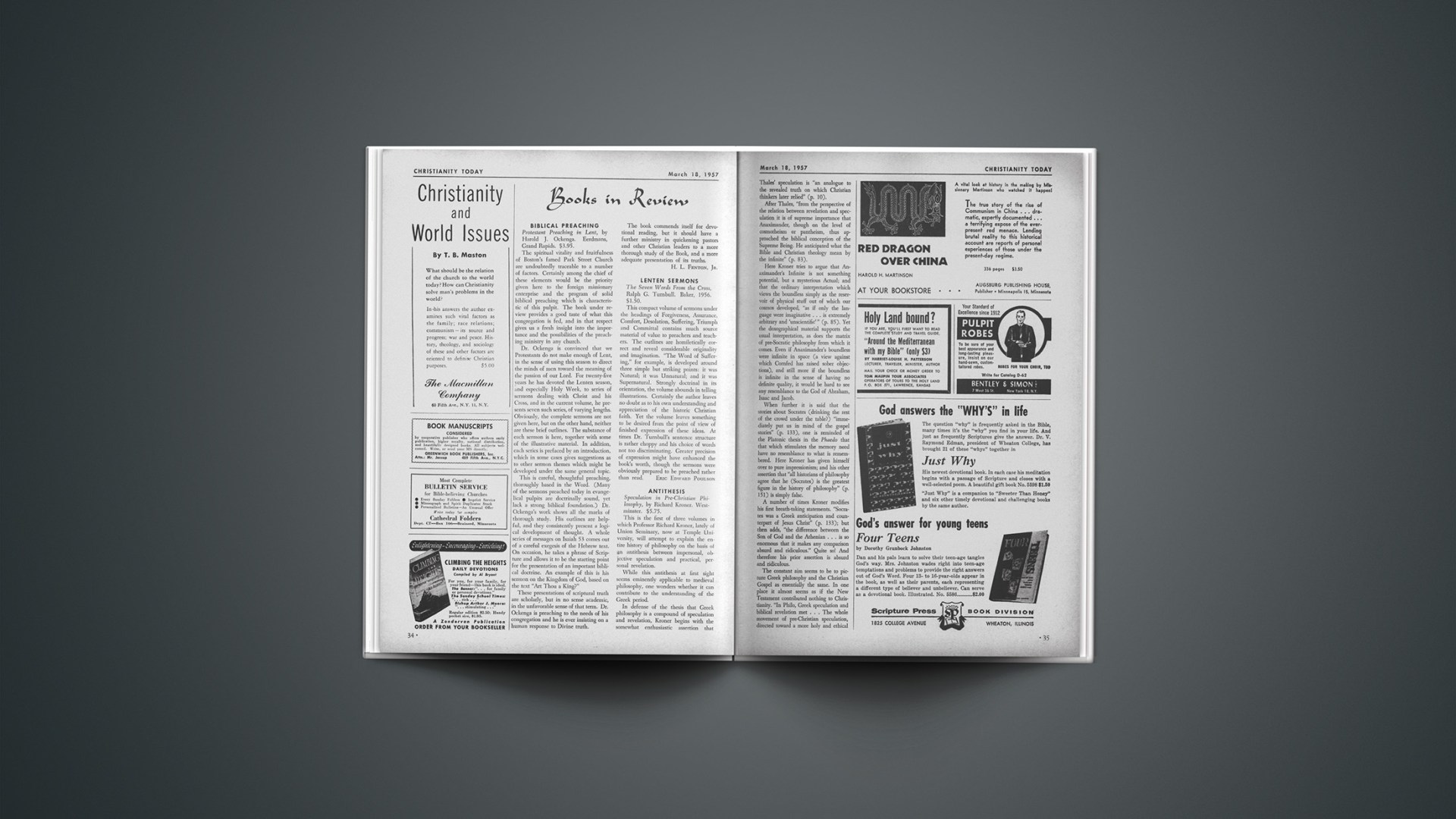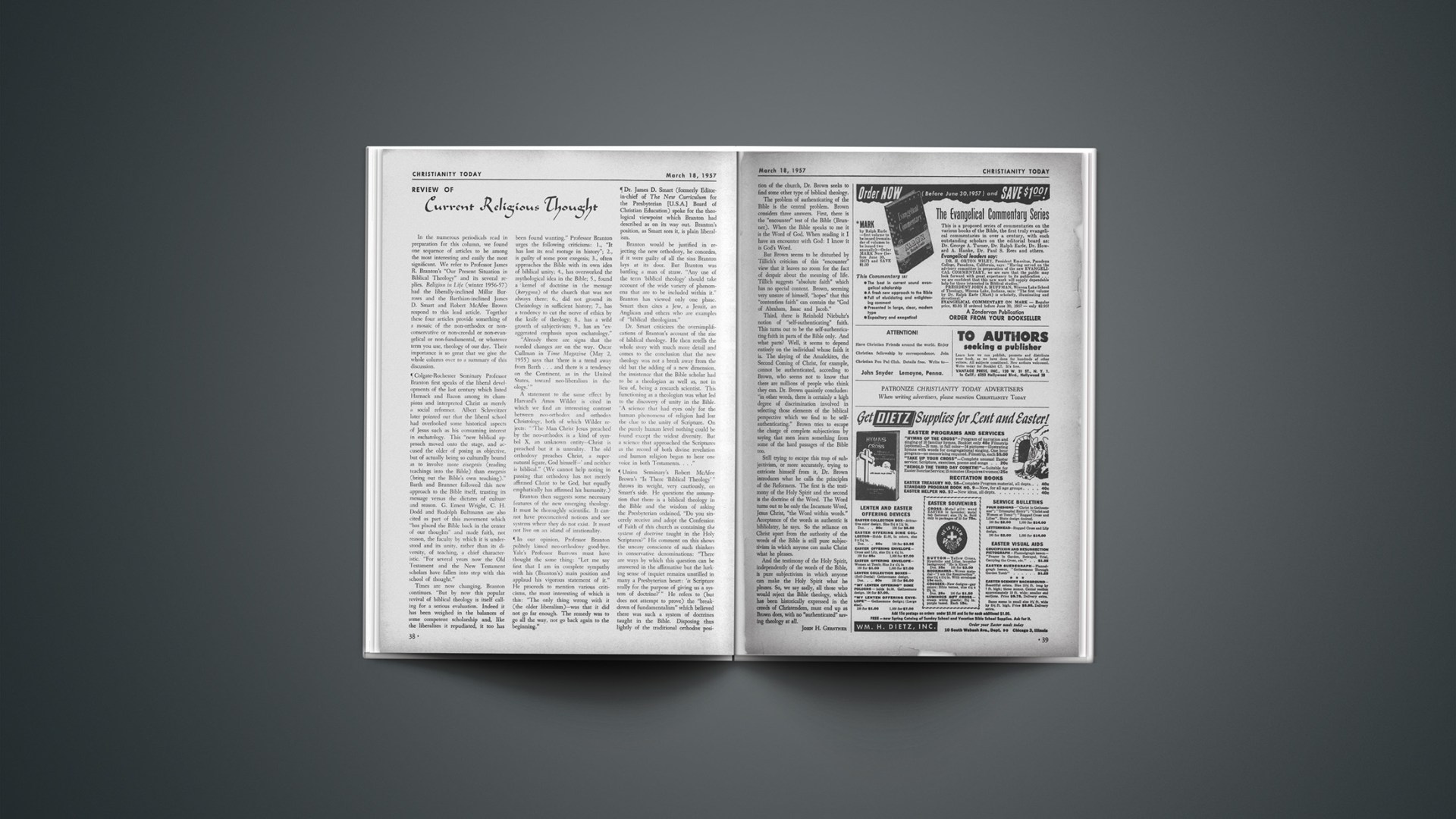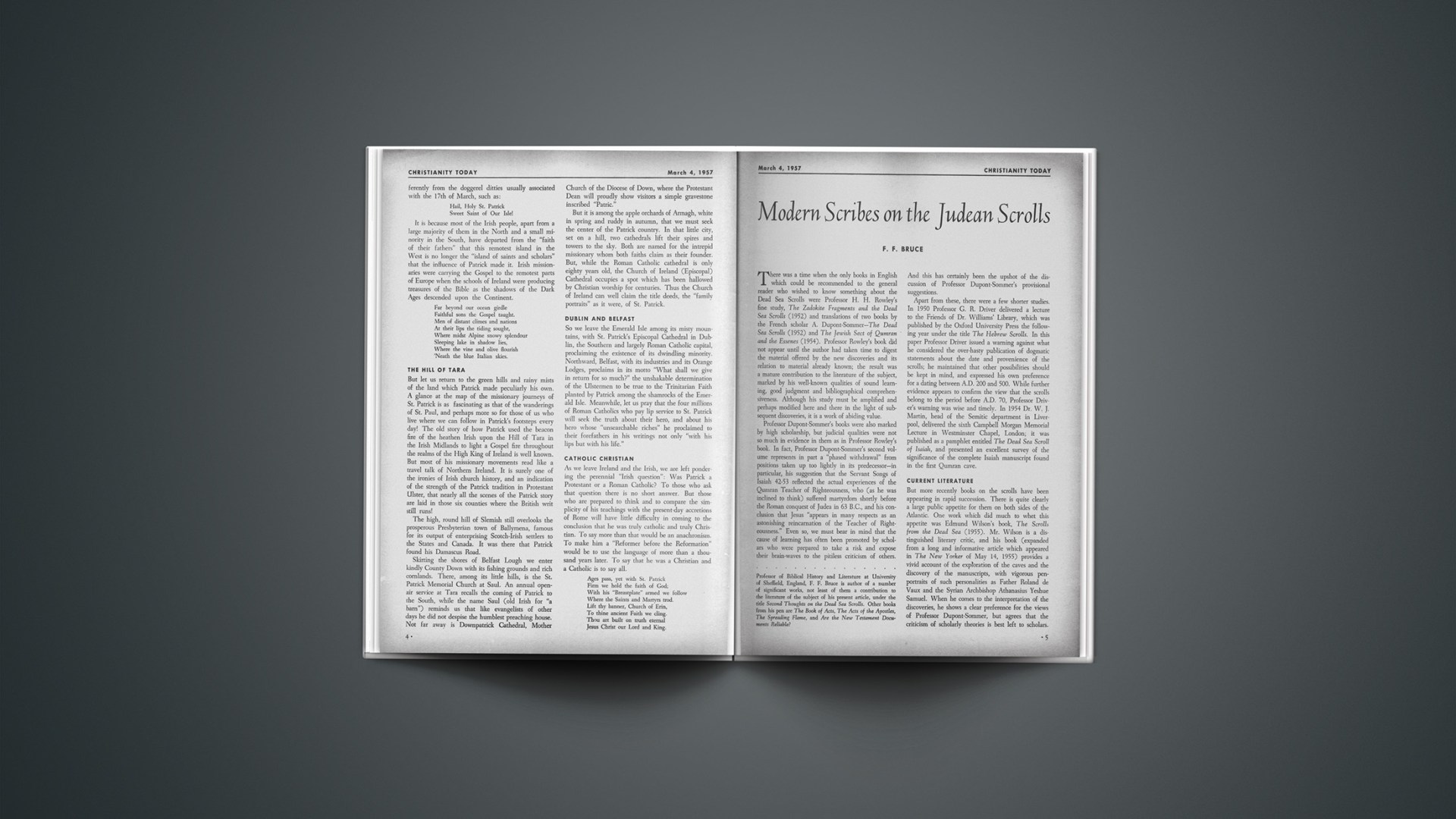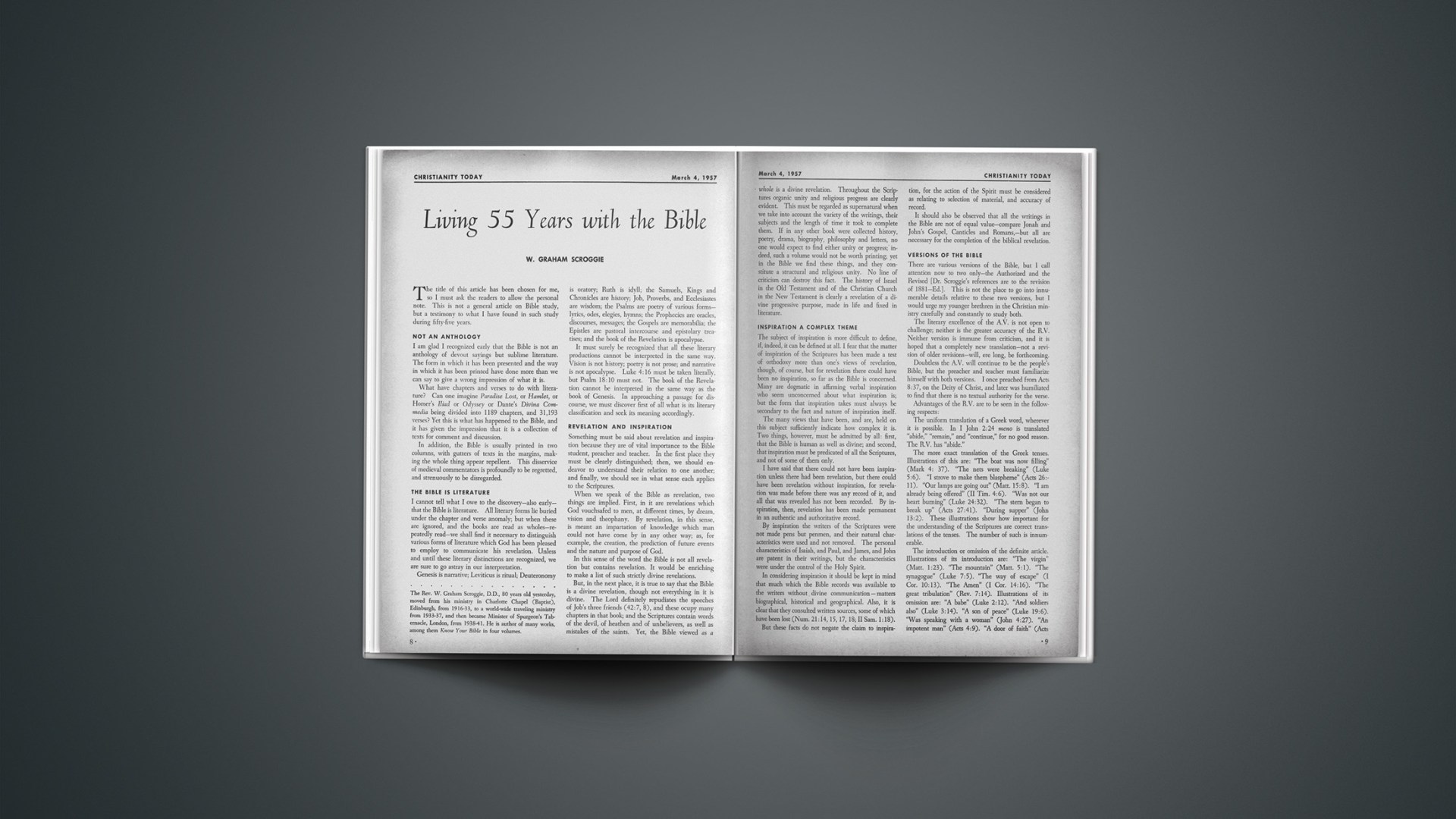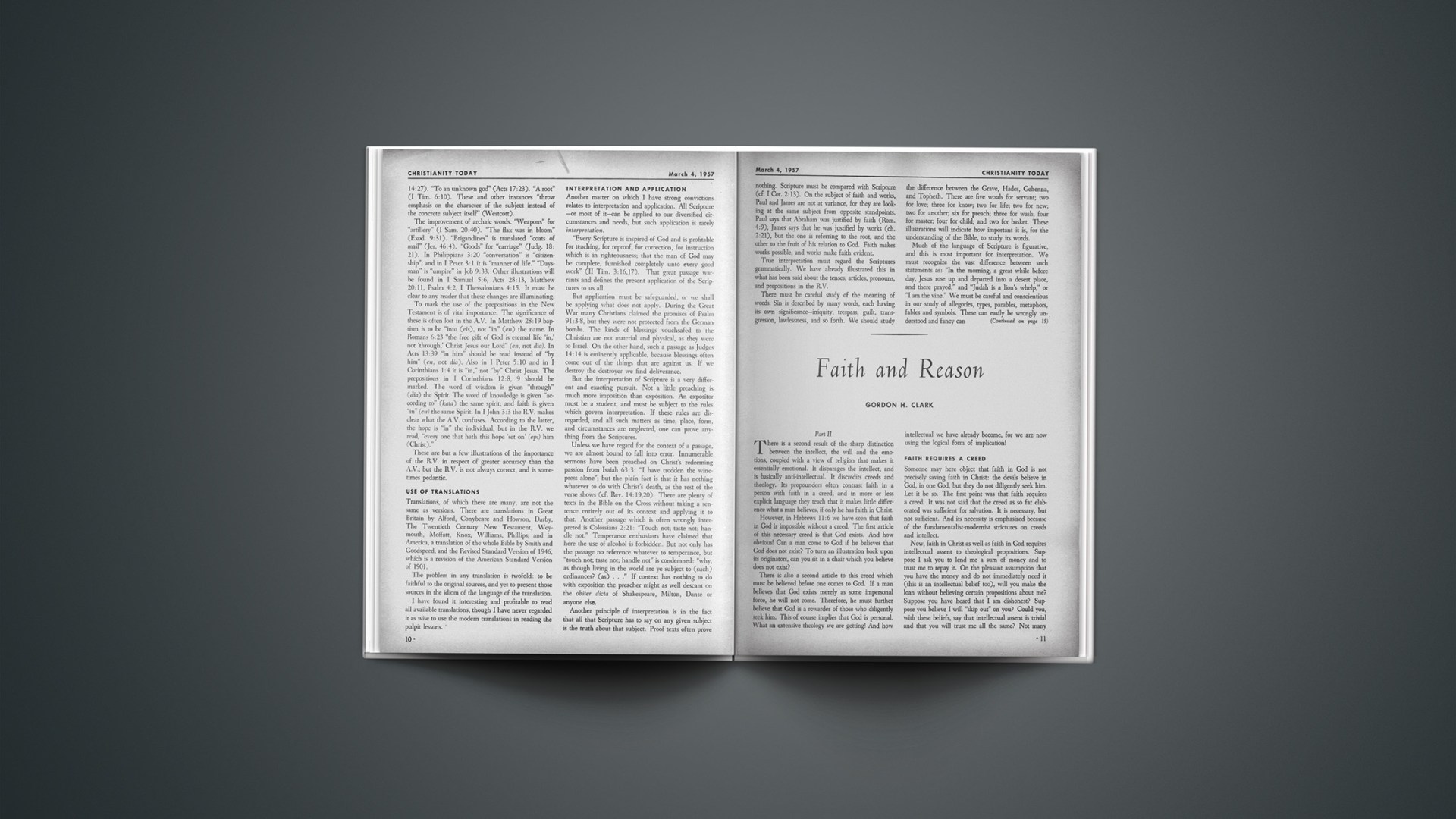Important Event
For the first time in Italian history, the government-sponsored broadcasting system recognized the event when Italian Protestants celebrated the 109th “emancipation” anniversary of the Waldensians.
The Waldensians, offspring of the medieval revival led by Peter Valdo (CHRISTIANITY TODAY, October 29, 1956), were held in a condition of subjection for centuries. But on February 17, 1848, King Carlo Alberto of Piedmont enacted the so-called “Patent Letters of Emancipation of the Waldensians.”
Commemoration of the date for religious freedom in Italy took place in the major Waldensian Church in Rome. It was packed to capacity.
Special speakers were the Reverend Guido Comba, a Waldensian; the Reverend Manfredi Ronchi, a Baptist; and Dr. Sante U. Barbieri, Bishop of the Conference of Latin America Methodist Church and one of the Presidents of the World Council of Churches.
Mr. Ronchi said the Italian Constitution clearly provides a wide degree of religious freedom but that cases of intolerance still occur. “We must persevere in the defence of religious freedom because it is fundamental to human dignity,” he added.
—R.T.

